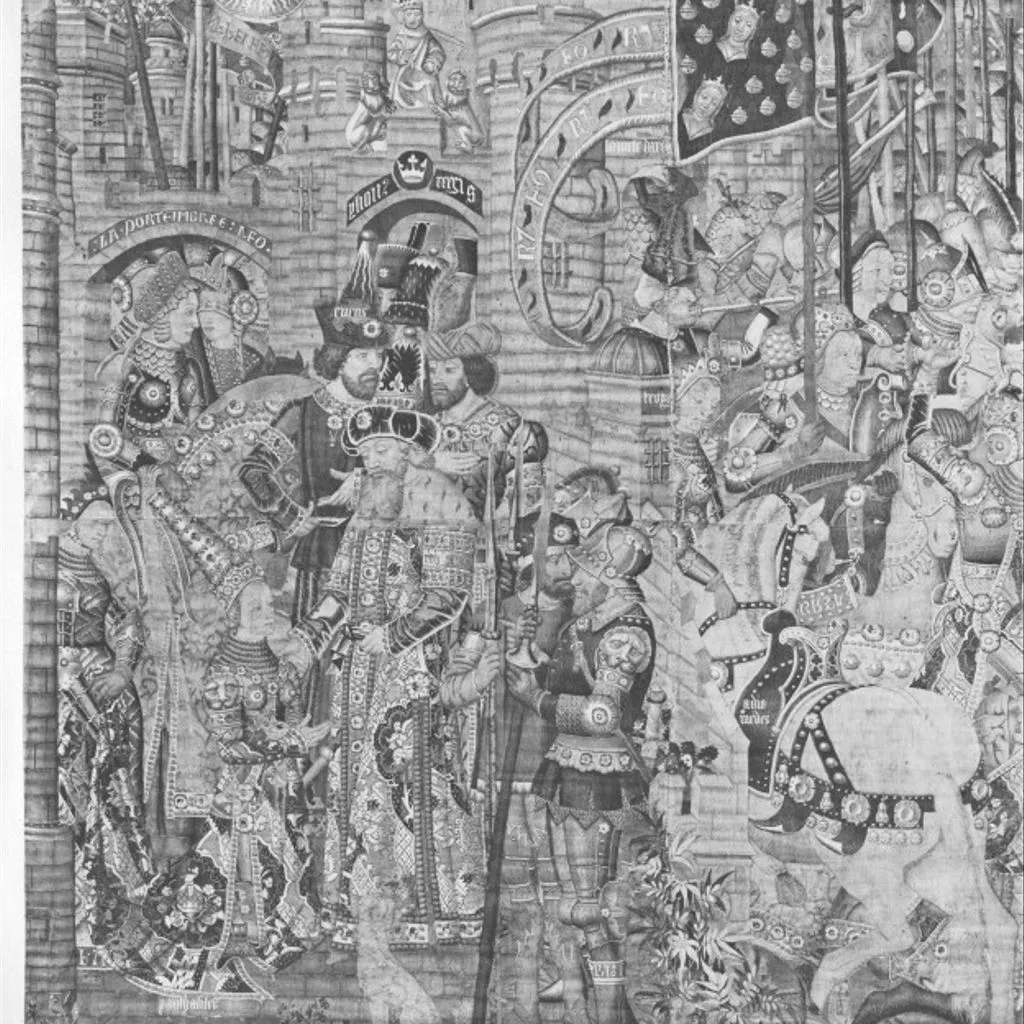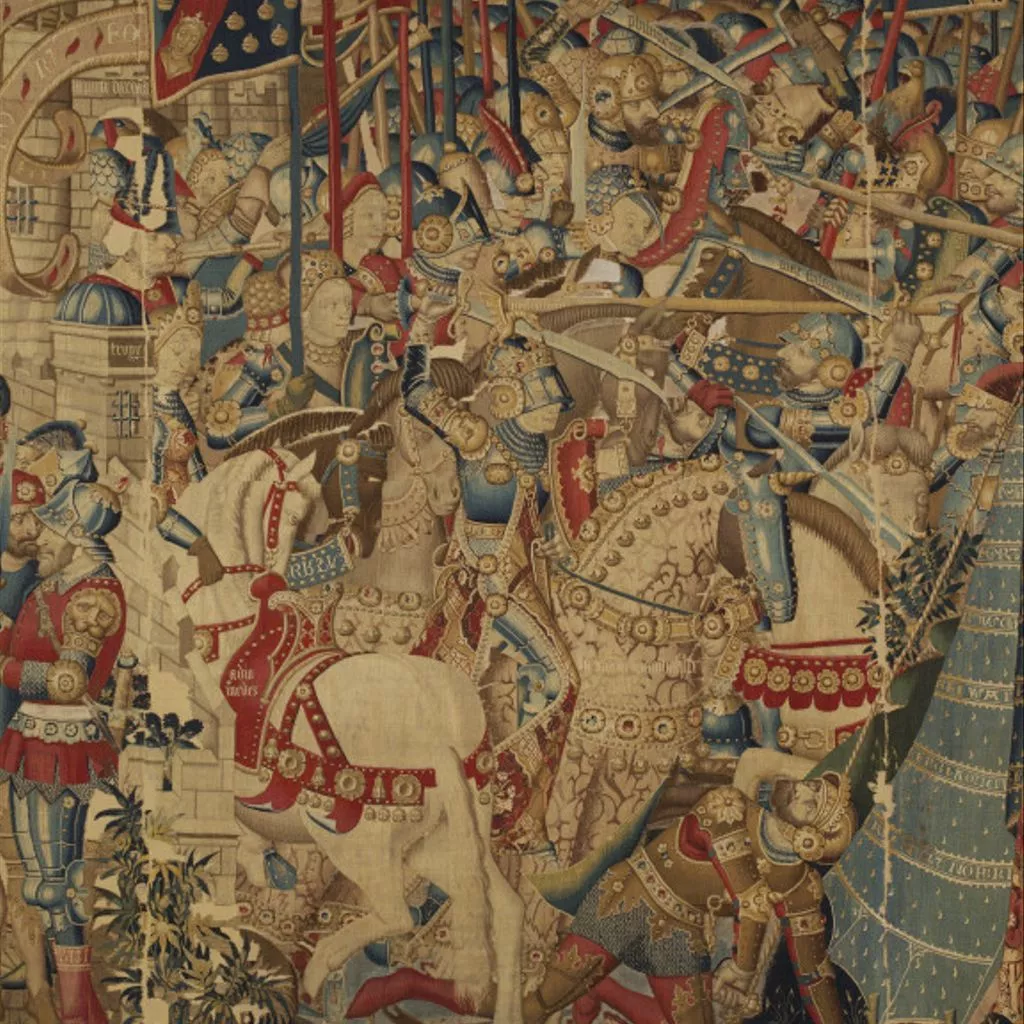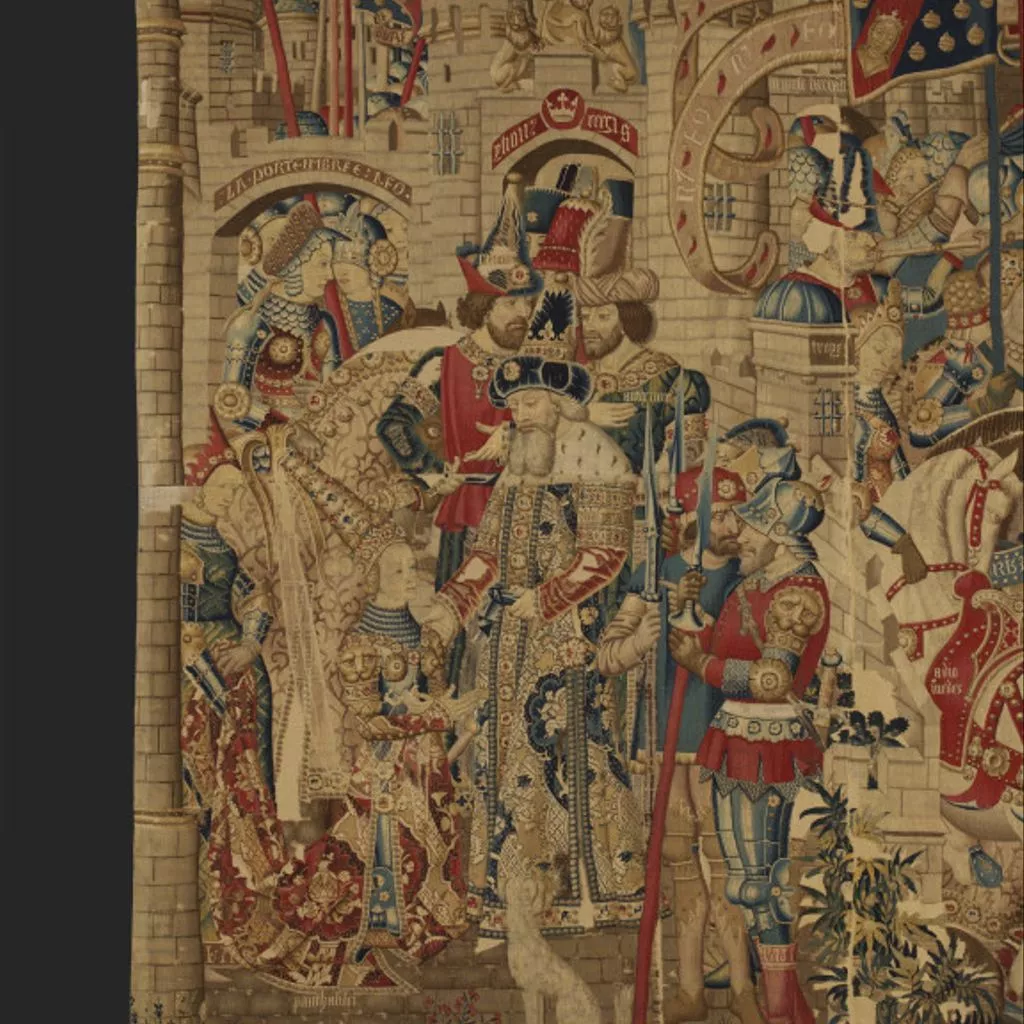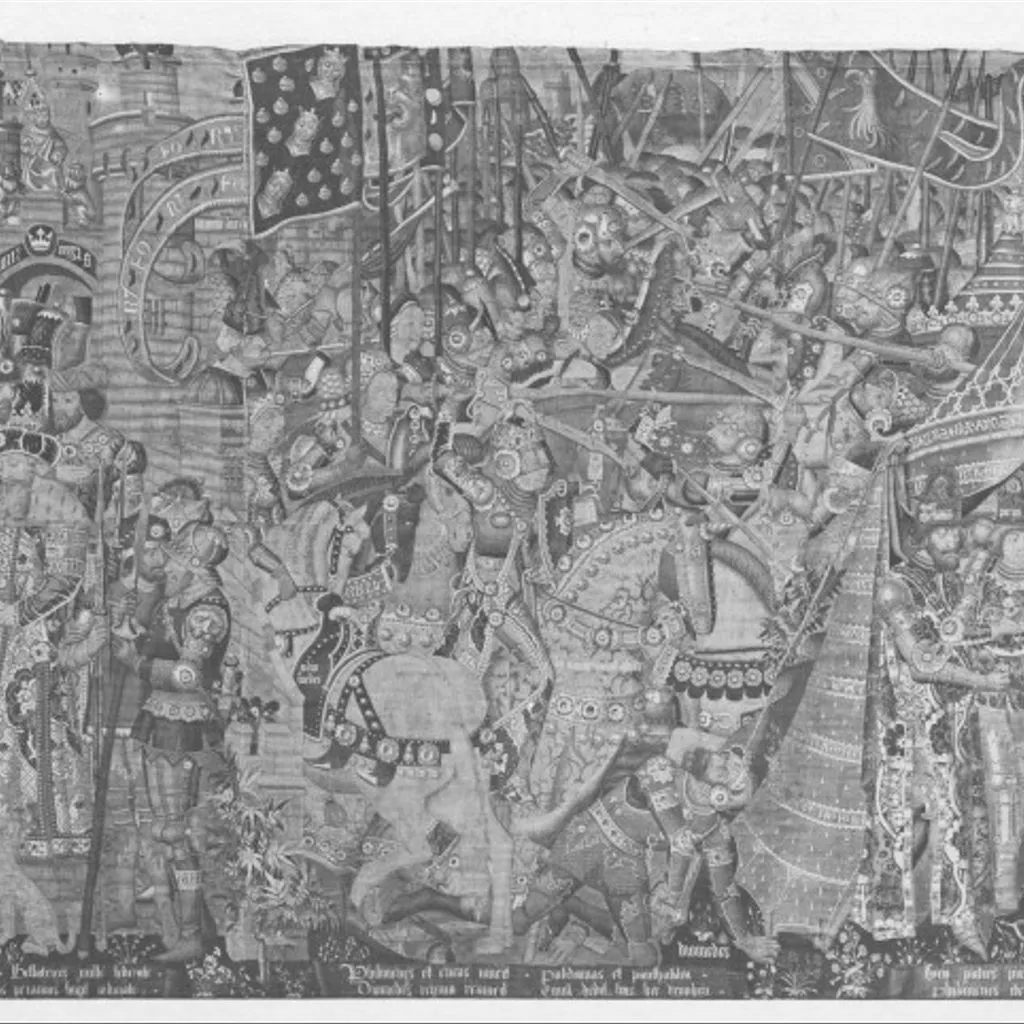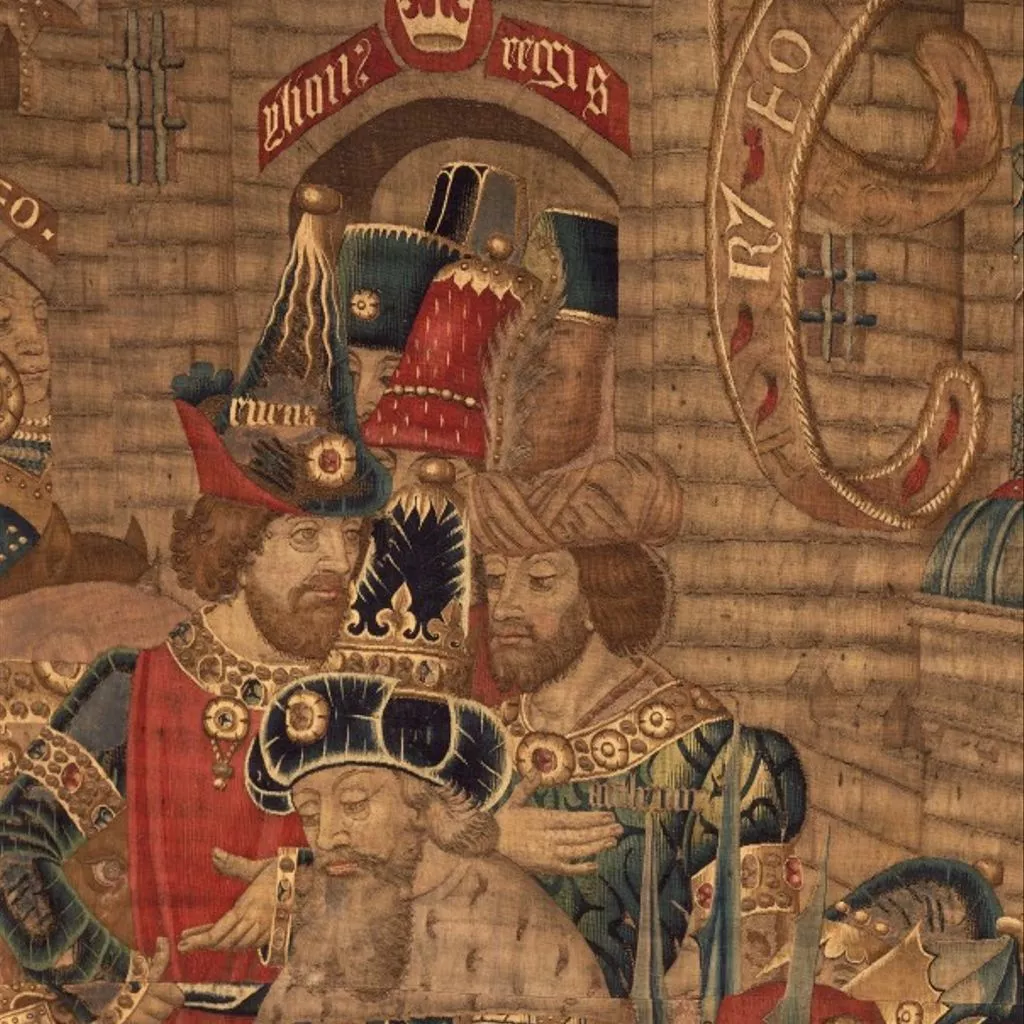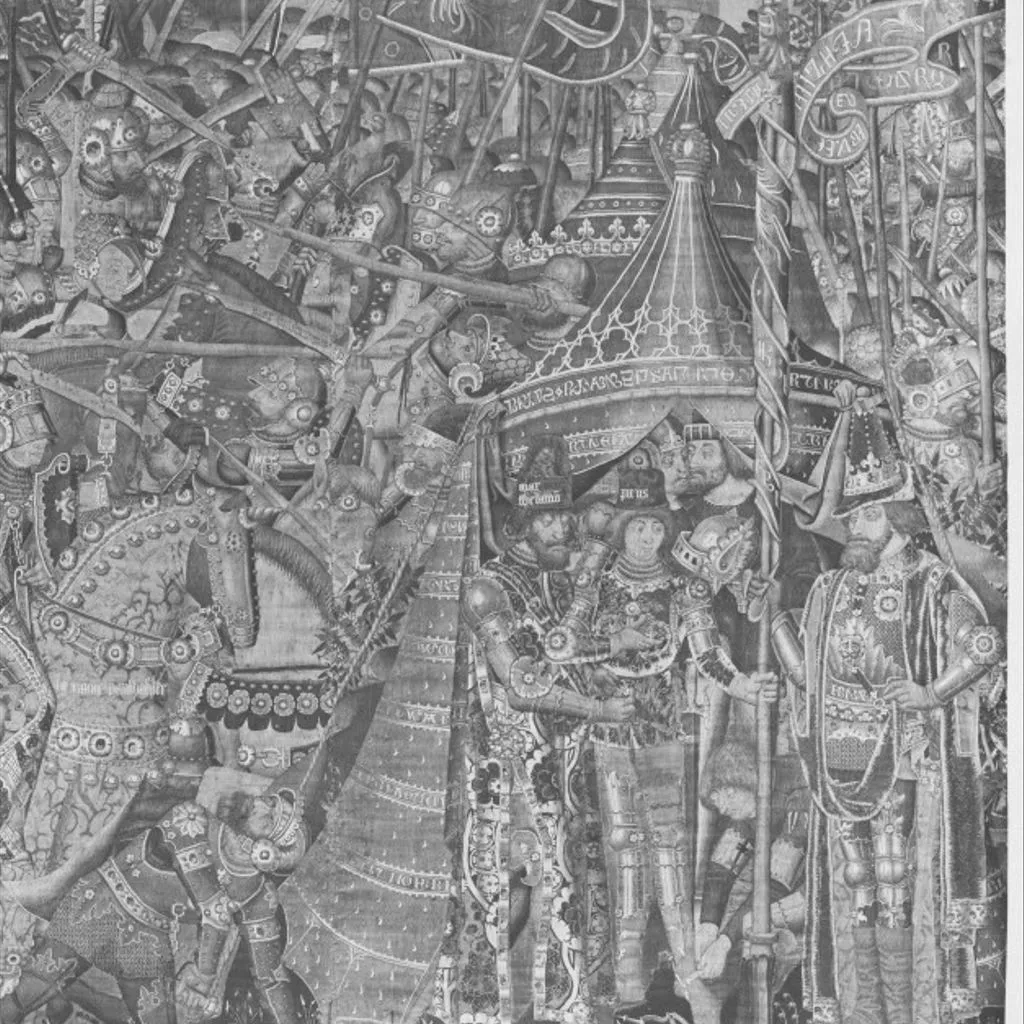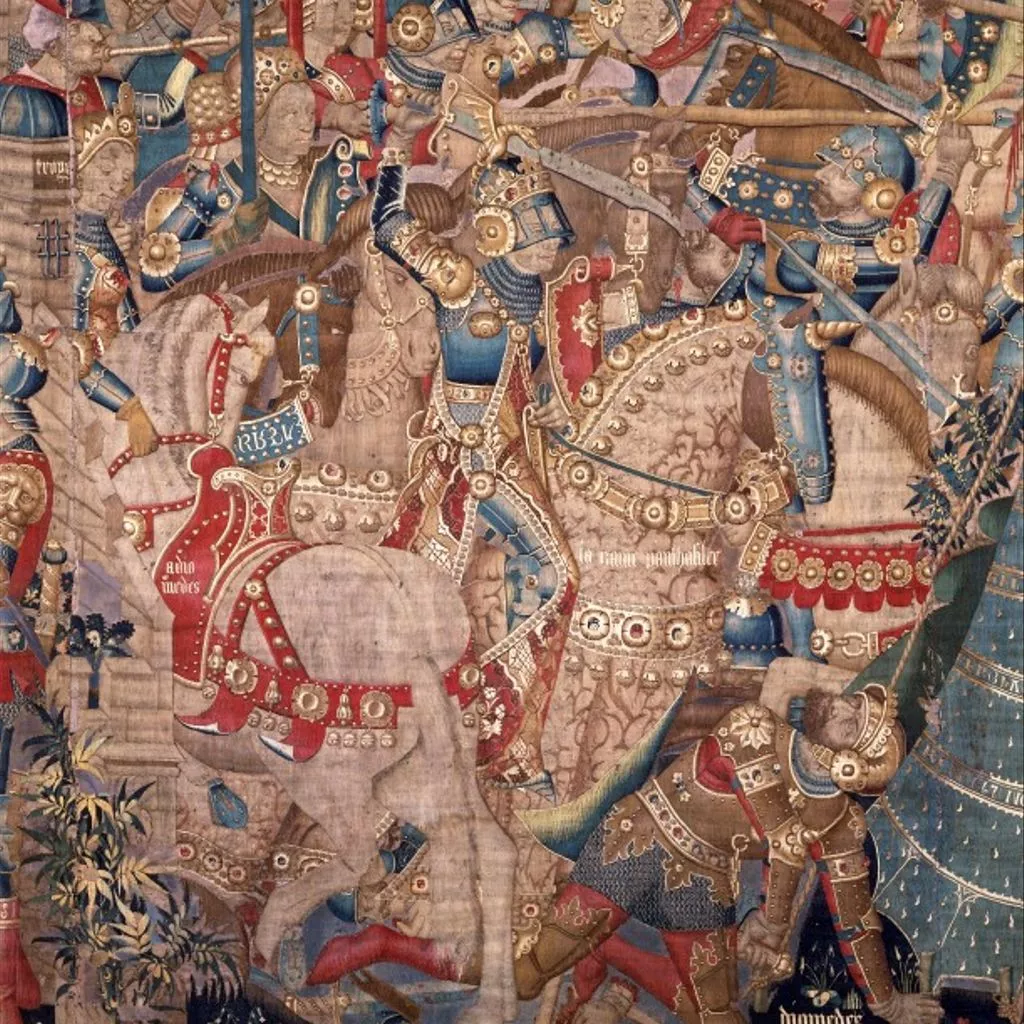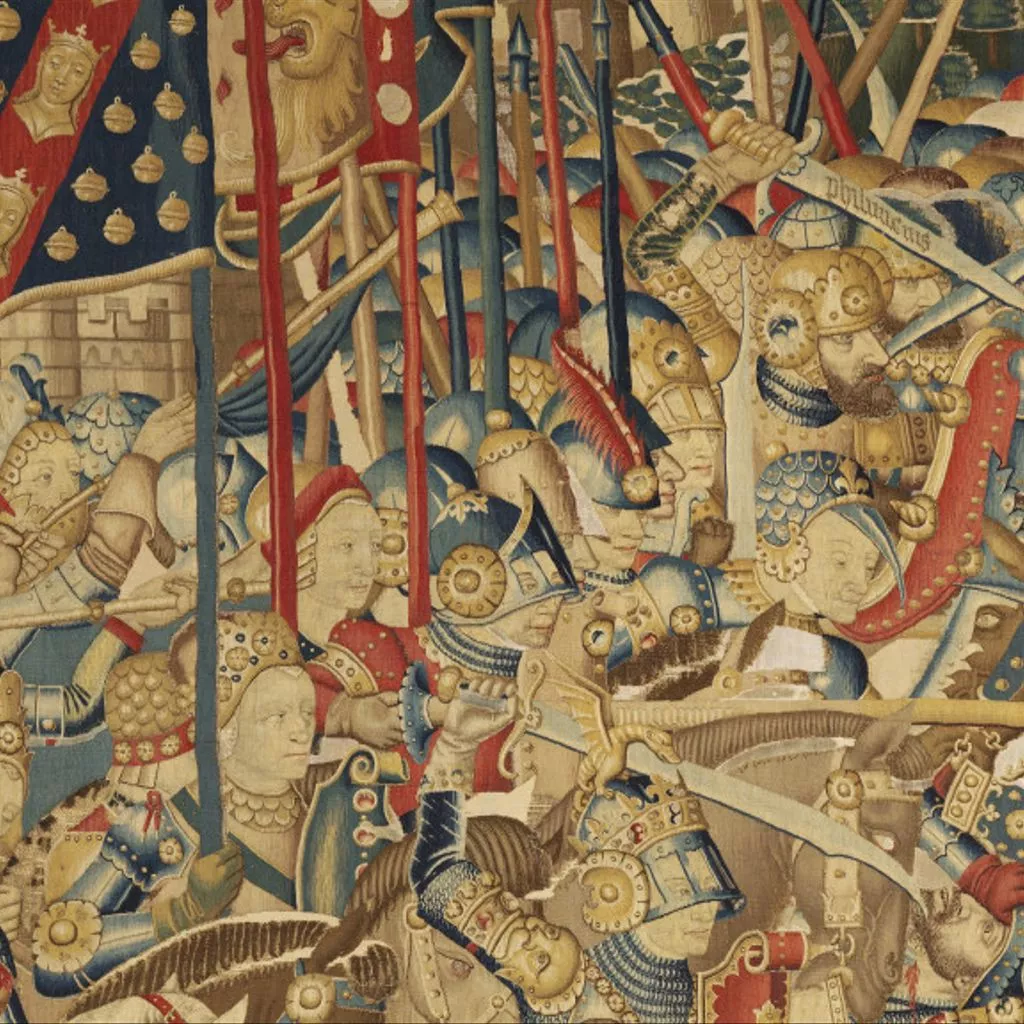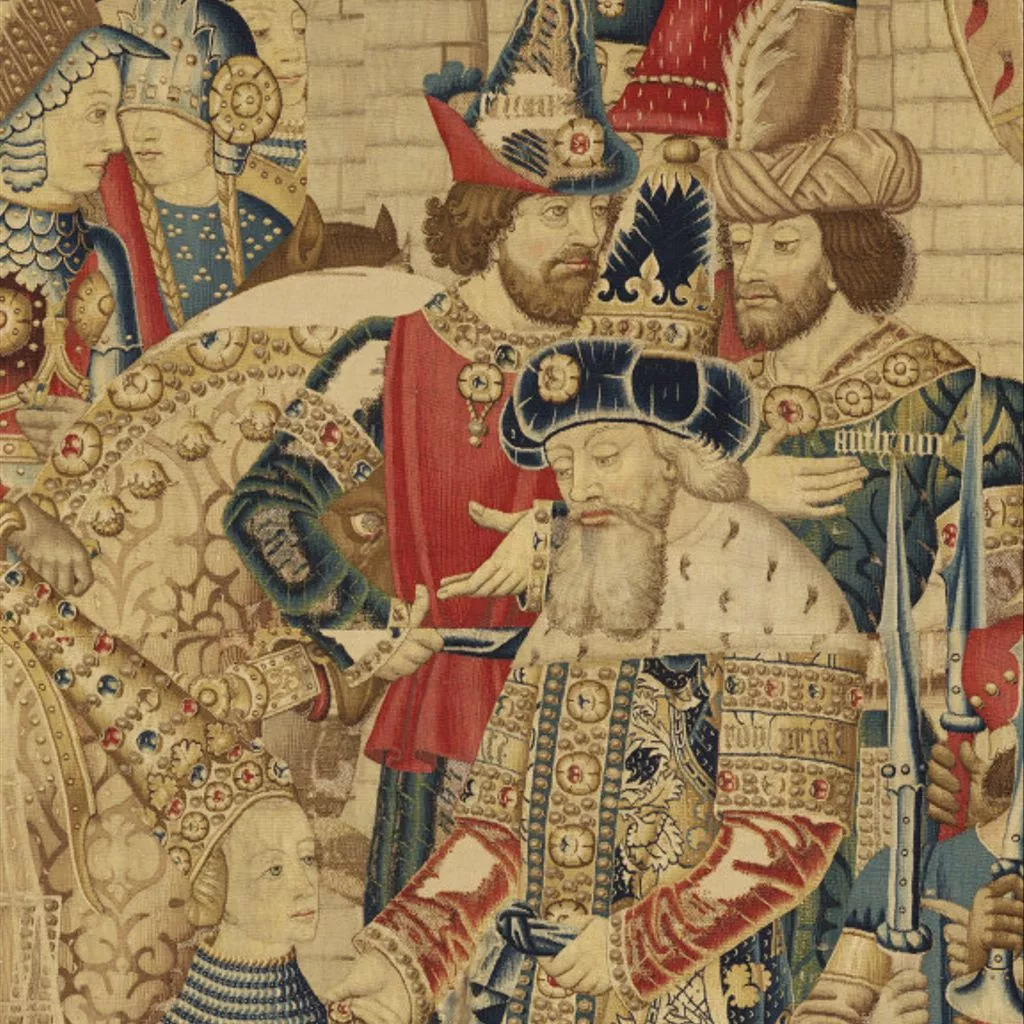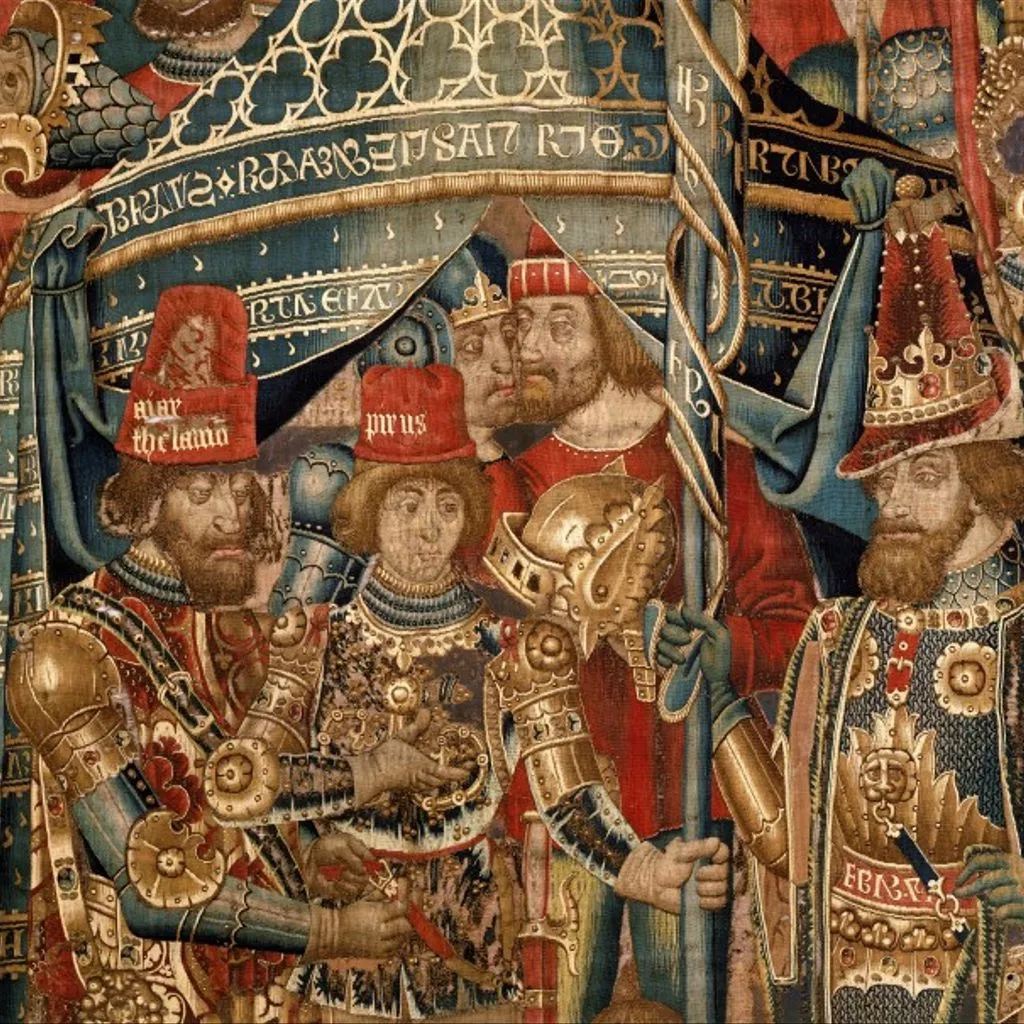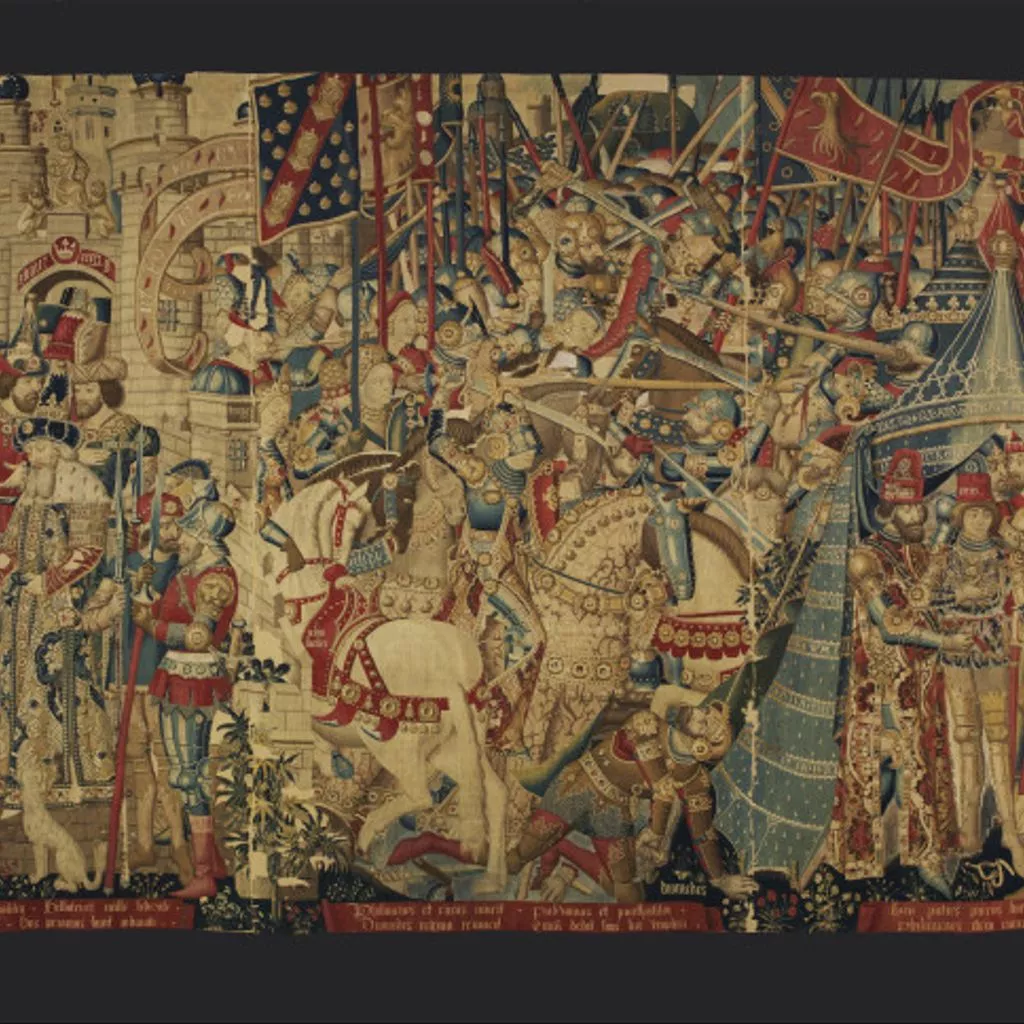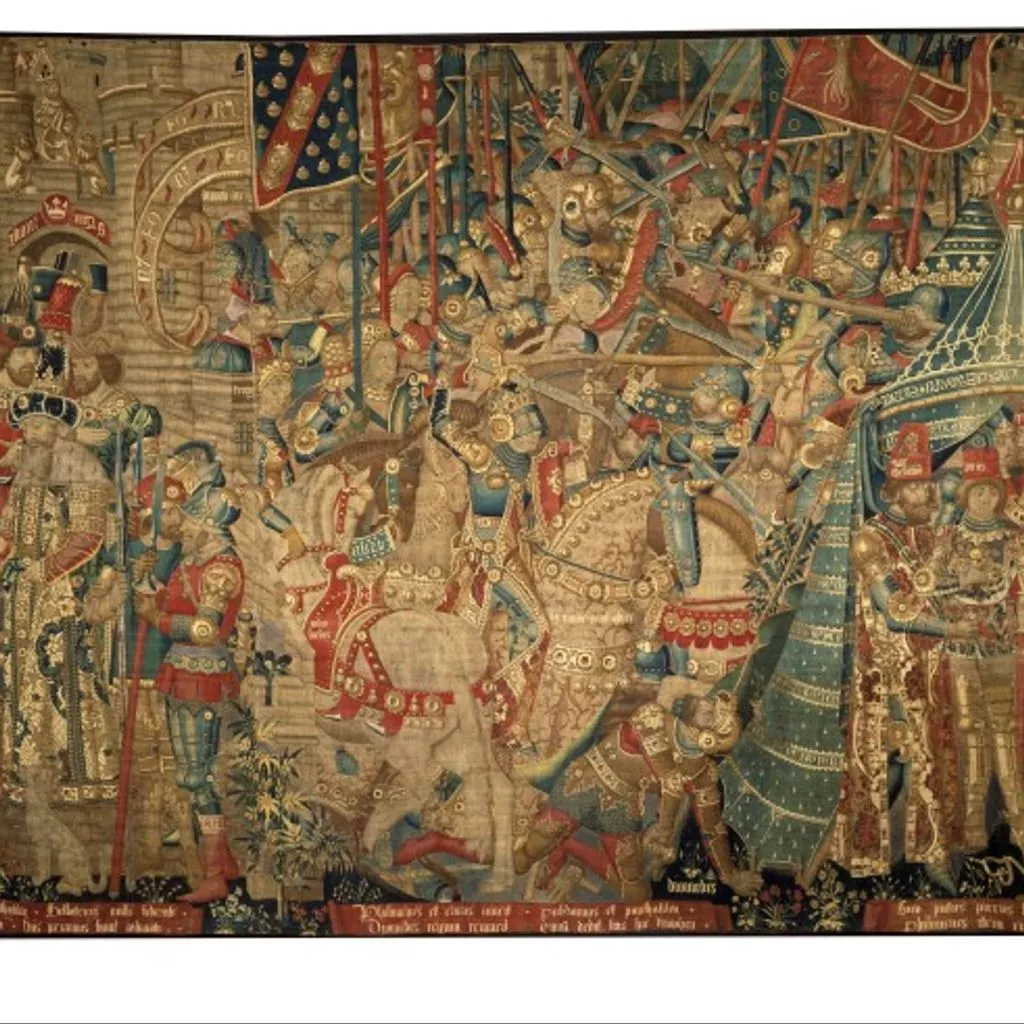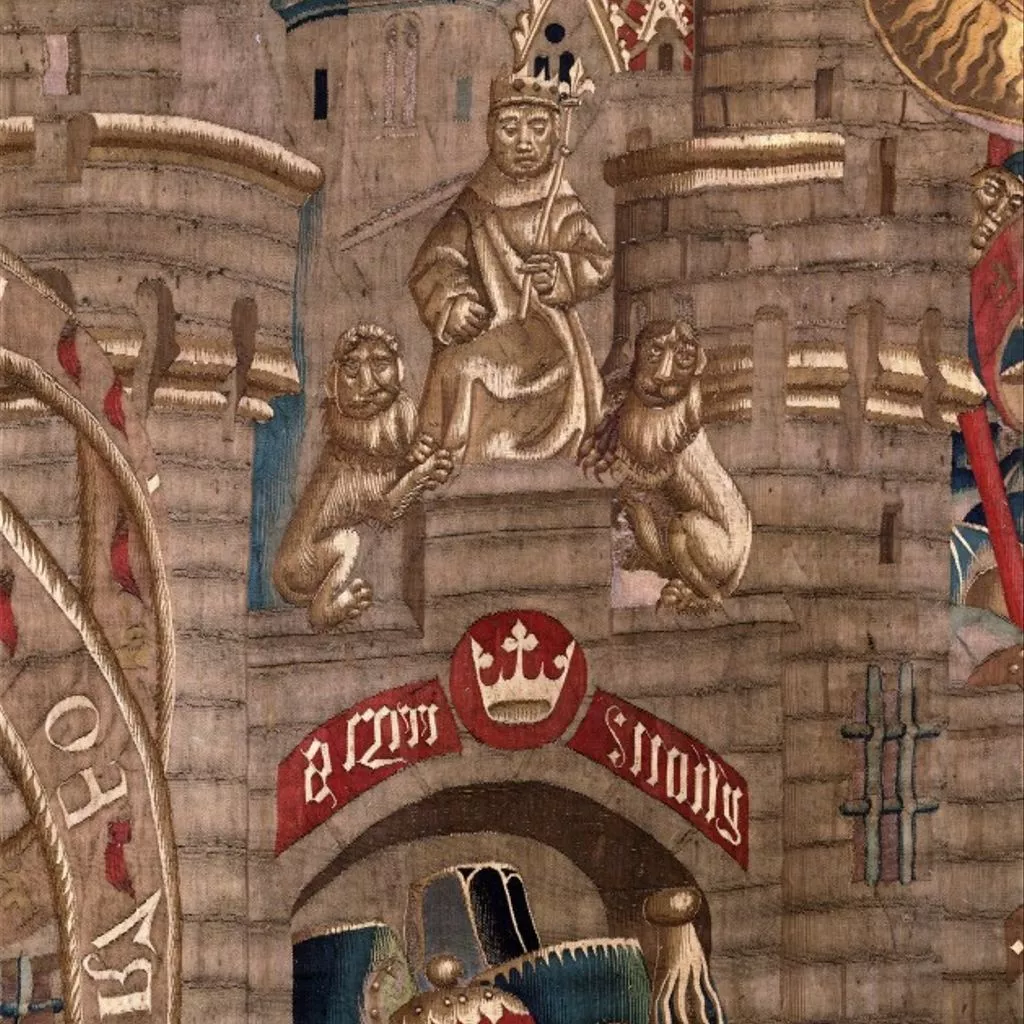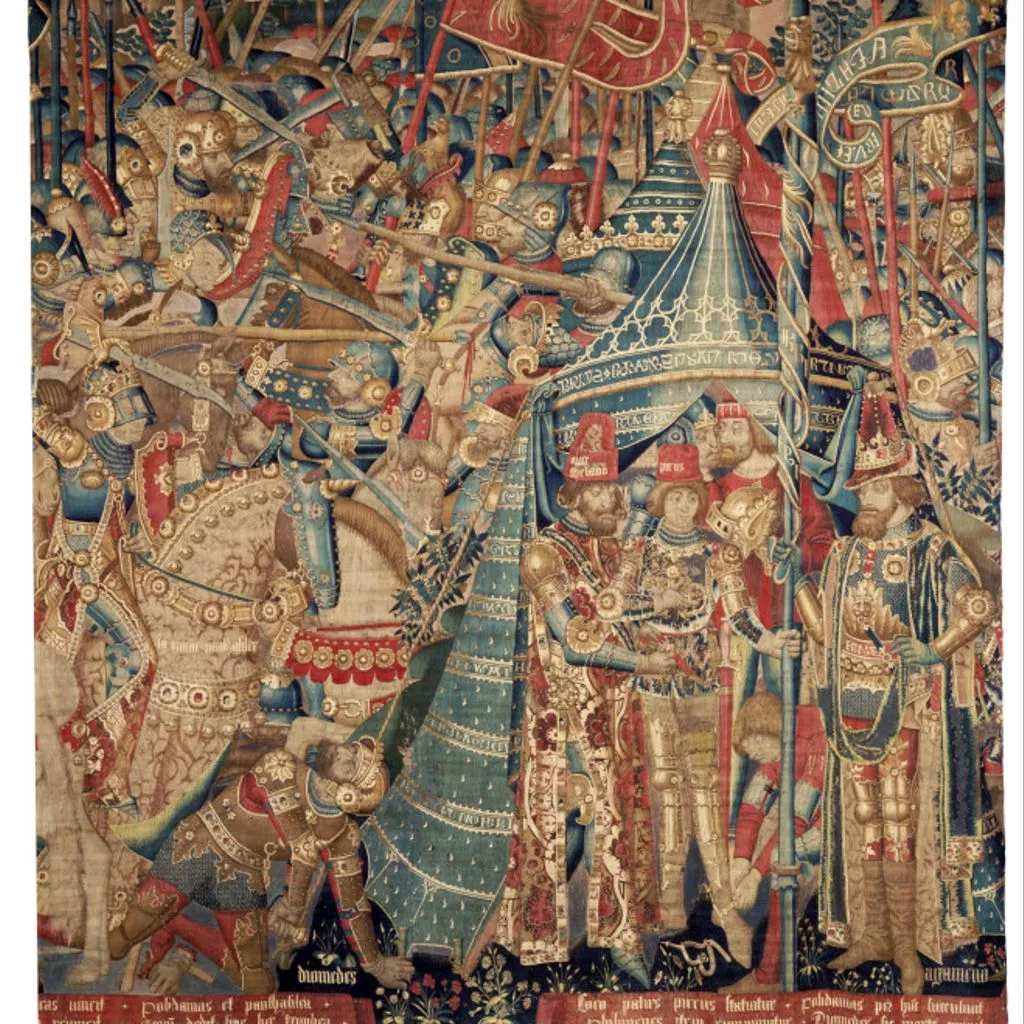Description
The complex story of the wars between the Greeks and Trojans continues to fascinate. In the past, sets of tapestries provided an ideal medium for the depiction of the legend. Many were produced in the 15th century and depicted a version by the medieval poets, rather than the earlier account by the Greek poet Homer.
Three scenes from the story are seen on this tapestry. On the left, Queen Penthesilea comes with her Amazon warriors to join the Greeks and kneels before Priam at the gate of Troy. In the centre is a battle between the Amazons and the Greeks, and on the right we see Pyrrhus being armed. The tapestry is crammed with beautifully executed and lively scenes of battle, kings, queens, princes, warriors and horses. Contemporary costume and armour, waving banners and a military tent are depicted in exquisite detail.
It is thought that there were originally 11 tapestries, of which this example is the ninth. Some of the other tapestries survive and the original drawings are in the Louvre in Paris.
Tapestry showing scenes from the Trojan wars
This tapestry is from a much larger original set which showed a medieval version of the history of the Trojan wars. The tapestry has been cut into three vertical sections, with the two left sections being again cut horizontally. The inscription (in French) along the top is missing. It shows three episodes in the story with a fourth on the right, now almost entirely missing. From left: Penthesilea, Queen of the Amazons, kneeling before Priam at the gate of Troy and offering her services to the Trojans; the Amazons, issued from the Dardanid Gate, engaging in the twenty-first battle with the Greeks; the young Pyrrhus, Achilles' son, in his tent being armed by Ajax Telamon with his fallen father's armour, in the presence of Agamemnon and others; the twenty-second battle with Pyrrhus joining the Greek forces in their resistance to Penthesilea (mostly missing).
Original designs (petit patrons) for the Trojan War tapestries still exist; eight large drawings in the Louvre. The design may actually have been conceived for a French court patron sometime in the mid-1460s.
These designs are not based on Homer's Iliad but old medieval literary versions (for example Benoit de Sainte Maure's Roman de Troie from c. 1180). The story was a popular subject in medieval Europe - many of the north european courts had a set, of which also many claimed to be descended from the Trojans, sometimes through Aeneas. The renewed interest of the story may partly have been from the fall of Constantinople in 1453.





















